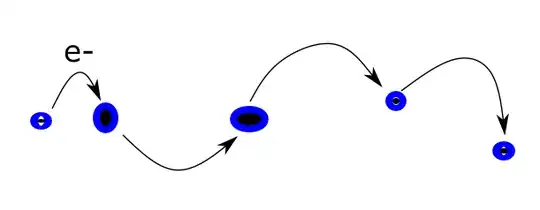Suppose you have a nanocomposite wire in which electrons can move through it exclusively with the electron tunneling between conductive nanoparticles that are within optimal distance (like in figure below jumping from a conductive nanoparticle to another). Can a macroscopic wire like that be used to conduct electricity efficiently? What are the main differences in conductivity properties compared to a regular copper wire?
Asked
Active
Viewed 122 times
1 Answers
1
I assume that you mean that the distances, the tunneling probabilities or the sizes of different grains are not the same, so that we are dealing here with granular disordered system (as opposed to periodical identical grains/atoms, which would be described by a Bloch theorem - which can be also artificially created).
There are several different directions that one could explore:
- Physics of granular systems: one could start with this old review and follow the articles citing it in application to one-dimensional systems. There are indeed different transport regimes, depending on the parameters of the system (size and the conductivity of the grains, their density, etc.)
- Anderson localization is less about granules and more about how disorder may affect transport in 1D system - specifically, it becomes non-conducting.
- More generally: disordered systems, weaks/strong localization - the subject has been studied extensively, although not necessarily in the context of granules, but semiconductors filled with randomly dispersed impurities. Still, many the physical features are the same.
- Another generalization: one-dimensional structures, which lead in directions like Landauer-Büttiker formalism for no electron-electron interactions and Luttinger liquids when the interactions are important.
- Finally, tunneling in disordered semiconductors is an important subject in itself - I could suggest this paper.
Roger V.
- 68,984
